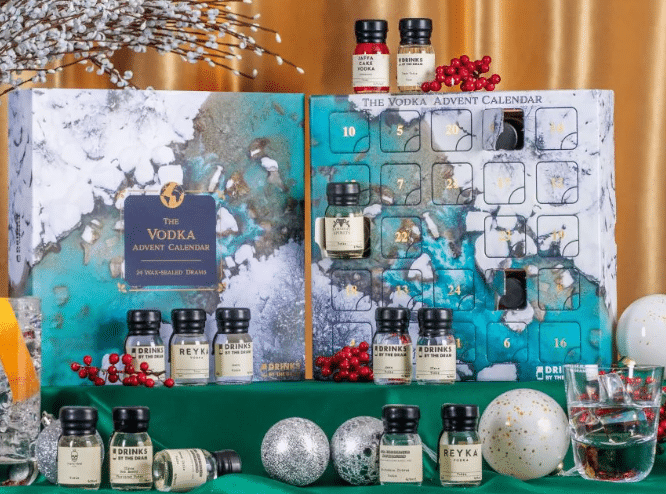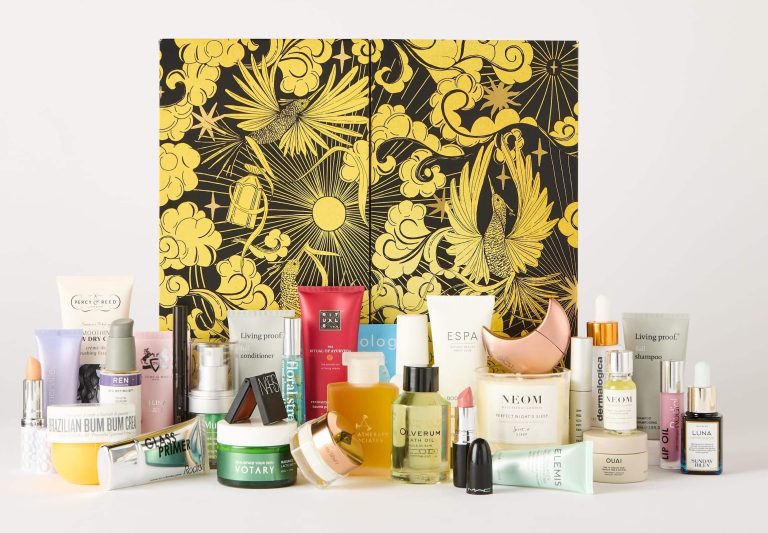Advent calendars with chocolate
As an Amazon Associate, christmas.co.uk earns from qualifying purchases.
The humble advent calendar remains a much-loved tradition in British homes as a Christmas countdown, and advent calendars with chocolate have become a staple of the festivities.
Please note: This article is a review of 2024’s Advent calendars with chocolate
But what exactly are these gifts, why do they hold such appeal, and how have they evolved?
The Christmas.co.uk team explores the world of chocolate advent calendars, diving into their history and we’ll offer some predictions for the most popular options this year.
We’ll also spotlight some of the best UK suppliers offering quality or quirky choices, ensuring there’s something for everyone this festive season.
What are chocolate advent calendars?
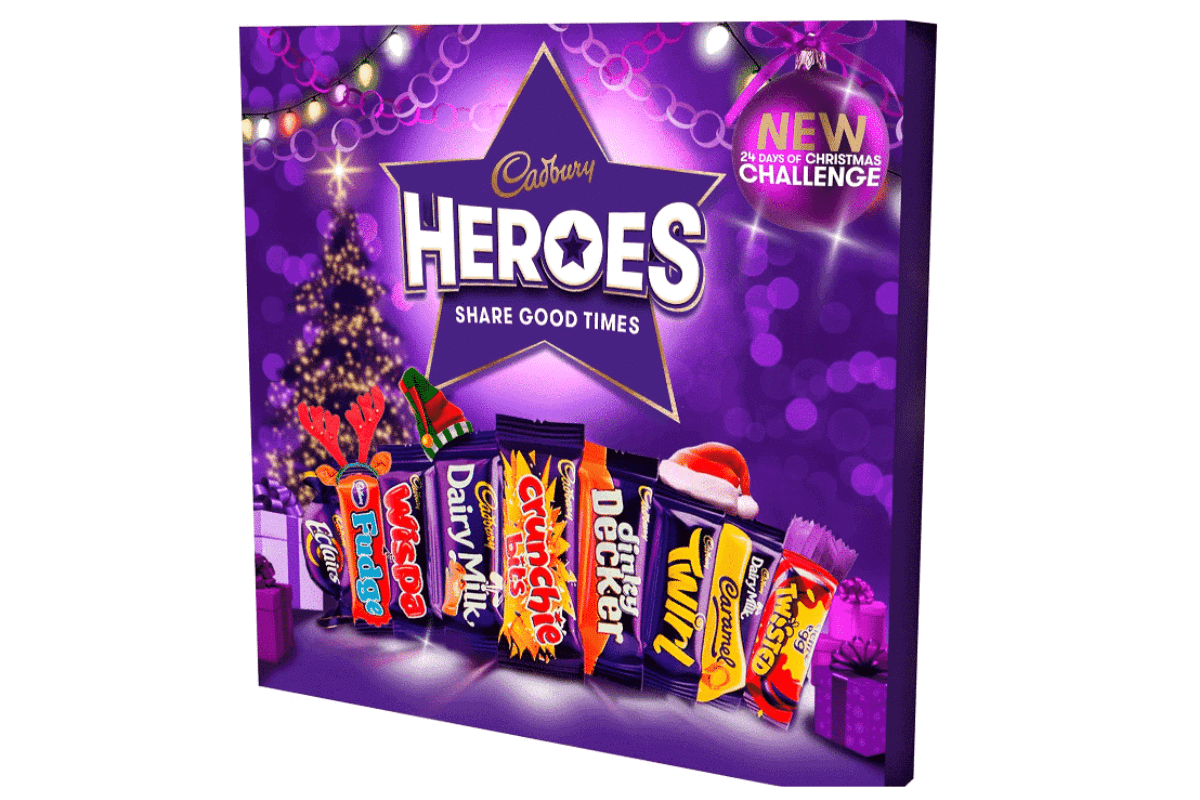
At their core, chocolate advent calendars are a lovely way to mark the days leading up to Christmas.
Typically featuring doors or windows – one for each day from 1st December to Christmas Day – they conceal a piece of chocolate behind each opening.
The tradition stems from the Christian season of Advent, a period of preparation for the birth of Jesus, but today, it’s as much a secular celebration of indulgence as it is a religious custom.
Initially, these calendars were made with a simple cardboard design and a festive scene, perhaps a snow-dusted village or a jolly Santa, hiding a modest chocolate treat.
However, the modern market has expanded far beyond this, with offerings ranging from affordable supermarket staples to luxurious artisanal creations to reflect a growing appetite for premium options alongside the classics.
Why do people gift chocolate advent calendars?
The act of giving chocolate advent calendars as Christmas gifts taps into several deep-seated impulses.
Firstly, they’re a fun, interactive present that extends the joy of Christmas throughout December.
A YouGov survey from 2024 found that 47% of Brits buy advent calendars ‘to create a fun daily activity’, while 44% see them to ‘celebrate the festive season’.
For children, the excitement of opening a door each morning builds anticipation for the big day, while adults enjoy a little daily indulgence.
Secondly, they’re versatile and affordable. With prices starting at just a few pounds, they suit a range of budgets, making them ideal stocking fillers or standalone gifts.
And the rise of luxury offerings shows that people are also willing to splurge on something special, either for themselves or loved ones.
Finally, chocolate itself is synonymous with Christmas in the UK. Indeed, more chocolate is sold at Christmas than at Easter. Christmas is the biggest chocolate-selling period, driven by a longer season with advent calendars, gift boxes and treats like Yule logs and truffles. Easter chocolate sales, while significant (around 10% of annual chocolate spending, with 80-90 million eggs sold), ranks second.
Also, Christmas sales are boosted by widespread gifting and festive traditions, with retail data showing higher value and volume compared to Easter’s shorter, egg-focused season.
From selection boxes to Quality Street tins, it’s a festive staple.
Gifting a chocolate advent calendar ties into this tradition, offering a sweet treat that feels both personal and seasonally appropriate.
What is the history of giving chocolate advent calendars?

The advent calendar’s origins lie in 19th-century Germany, where families marked the days of Advent with chalk lines on doors or lit candles.
By the late 1800s, printed calendars with pictures emerged, and the first commercial versions appeared in the early 20th century.
Chocolate didn’t enter the picture until the 1920s, when German producers began including sweets behind the doors – precursor to today’s chocolate-filled designs.
In the UK, advent calendars arrived later, initially as imports from Germany or Scandinavia.
Post-World War II, they gained traction as tokens of goodwill from European communities, with commercial production starting in the 1950s.
Historian Martin Johnes notes that early British calendars were simple, featuring festive images rather than treats, with the nativity scene often revealed on 24th December.
Chocolate versions existed in the 1950s and 60s but remained niche until Cadbury launched its first chocolate advent calendar in 1971. Continuous production began in 1993, cementing their place in British Christmas culture.
The 1990s marked a turning point, as chocolate calendars became the norm, reflecting growing affluence and a shift towards festive consumption.
Nestlé archivist Alex Hutchinson explains that post-war rationing had made chocolate a luxury, but by the 1960s, it was affordable enough to feature in calendars.
Today, more than 16 million advent calendars are sold annually in the UK, with chocolate dominating the market – a trend backed by YouGov’s finding that 75% of Britons opt for chocolate-filled versions each year.
What do people buy?
Buying habits vary widely, shaped by age, gender and budget.
YouGov’s 2024 survey reveals that 33% of Brits purchase an advent calendar for themselves annually, while 22% buy them as gifts.
Chocolate remains the top choice, with 75% of buyers preferring it over alternatives like beauty products or toys.
Among 18-24-year-olds, only 59% choose chocolate, with younger shoppers branching into jewellery advent calendars (21%) and candles (19%).
However, older demographics (45-54 and 55+) stick firmly to chocolate, at 80% and 79% respectively.
Price is a key factor with Google search data showing that ‘advent calendars £5 or less’ trends heavily every year.
The timing of a chocolate advent calendar purchase also matters.
Most Brits (56%) buy by mid-to-late November, with 19% shopping in early November and 18% waiting until December.
This urgency reflects the sell-out risk – luxury calendars like Liberty’s often vanish within hours of launch.
We’ve also found that Amazon has an amazing range of advent calendars filled with chocolate.
Which chocolate advent calendars will be popular this year?
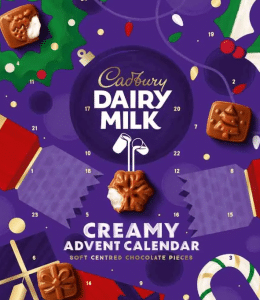
Cadbury Dairy Milk Advent Calendar: A perennial favourite, its classic milk chocolate and affordable price (around £3-£5) ensure it stays top of the pile
Hotel Chocolat Everything Advent Calendar: With truffles, pralines and vegan options, this luxury pick (around £30) caters to discerning adults. Its “posh” reputation and quality ingredients make it a standout
- Tony’s Chocolonely Countdown Calendar: Known for ethical sourcing, this calendar (around £15) offers quirky flavours like dark milk pretzel toffee
- Lindt Lindor Advent Calendar: Featuring smooth milk chocolate truffles (around £20), Lindt’s offering appeals to those seeking a step up from budget buys
- Love Cocoa Luxury Truffle Advent Calendar: At £29.95, this artisanal option blends decadence with sustainability, appealing to truffle lovers.
Best UK suppliers of chocolate advent calendars
Here’s a list of quality or unusual chocolate advent calendars from UK suppliers which you might find useful:
Chocolate advent calendars for children
- Cadbury Heroes Advent Calendar (£5-£7): Packed with mini Crunchies, Twirls and Fudges, this is a kid-friendly classic. Its Santa-themed design and variety make it a hit with little ones.
- Hotel Chocolat Up to Snow Good Children’s Advent Calendar (£15): Featuring milk chocolate penguins and snowmen, plus an oversized treat for Christmas Eve, this offers a playful yet premium twist.
- Chococo Kids’ Chocolate Advent Calendar (£12.95): Handmade in Dorset, this calendar hides fun chocolate shapes behind eco-friendly packaging – perfect for eco-aware families.
Advent calendars aimed at men and women
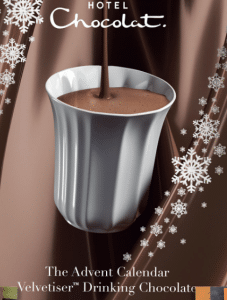
Here, we look at gender-based categories in a consumer-friendly way to match products to gifting trends, informed by search data and shopping habits, rather than a direct reflection of manufacturer practices.
This year, expect brands to continue prioritising inclusivity while offering enough variety to suit every taste — male, female, or otherwise.
Chocolate advent calendars for women
- Love Cocoa Luxury Chocolate Truffle Advent Calendar (£29.95): With silky truffles in festive flavours like salted caramel, this sleek design appeals to women seeking indulgence. Its sustainable ethos adds extra appeal.
- Hotel Chocolat The Velvetiser Drinking Chocolate Advent Calendar (£25): A unique twist, this offers daily hot chocolate sachets, think mince pie and salted caramel, which makes it ideal for cosy nights in.
- Chococo The Classic Christmas Countdown Selection Box (£29): Artisan chocolates in elegant packaging, from gingerbread to champagne truffles, make this a sophisticated gift.
Chocolate advent calendars for men
- Tony’s Chocolonely Countdown Calendar (£15): Bold flavours like dark milk pretzel toffee suit adventurous palates, while its ethical stance resonates with socially conscious buyers.
- Hotel Chocolat Advent Calendar for Two (£35): Designed to share (or not!), this includes robust Nutmilk chocolates and truffles – great for men who enjoy a richer taste.
- Montezuma’s Chocolate Advent Calendar (£12): Quirky and organic, with dark and milk chocolate options, this British brand’s calendar offers a rugged, no-nonsense vibe.
Chocolate advent calendars for pets
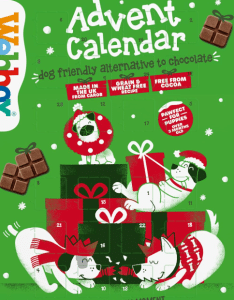
There’s a growing trend of including furry friends in the festive countdown and these calendars mimic the human tradition, offering 24 or 25 days of excitement with treats designed to keep tails wagging or whiskers twitching, all without the dangers of real chocolate.
If you would like to buy a chocolate advent calendar for pets, then consider these creations:
Webbox Dog Safe Chocolate Advent Calendar (£3-£5): Available on the webbox.co.uk site or Amazon, this is a budget-friendly option. The calendar uses carob to create dog-safe ‘chocolate’ drops. Grain-free and easy to break into smaller pieces, it’s ideal for pups of all sizes. Available at major retailers like Tesco too.
- Pets at Home Chocolate Dog Advent Calendar (£5): Featuring carob-based treats with less sugar than previous years, this calendar boasts eco-friendly packaging. A simple, reliable choice for festive pooches.
- Lily’s Kitchen Advent Calendar for Dogs (£5.99): While not carob-exclusive, this premium pick blends meaty treats with occasional carob goodies. Natural ingredients like turkey and cranberry make it a step up for pampered pups.
- Good Boy Choc Drop Advent Calendar (£4-£6): Packed with carob drops, this calendar’s playful design and affordability make it a popular choice. Stocked by pet shops and online marketplaces like Pets at Home and Amazon.
These suppliers offer a range of options, from purse-friendly to posh, ensuring every pet can join the advent adventure. Stock tends to dwindle by late November, so snag yours early!
Chocolate advent calendar gifts
Chocolate advent calendars have come a long way from their German roots, evolving into a much-loved British Christmas tradition that blends nostalgia, indulgence and gift-giving joy.
Whether you’re after a budget-friendly Cadbury classic for the kids, a luxurious truffle-filled treat for a special woman, or an ethical, bold-flavoured option for the man in your life, the UK’s offerings have you covered.
Remember, early shopping is key to securing the best picks, so as December nears, grab your favourite and let the Christmas countdown begin!



